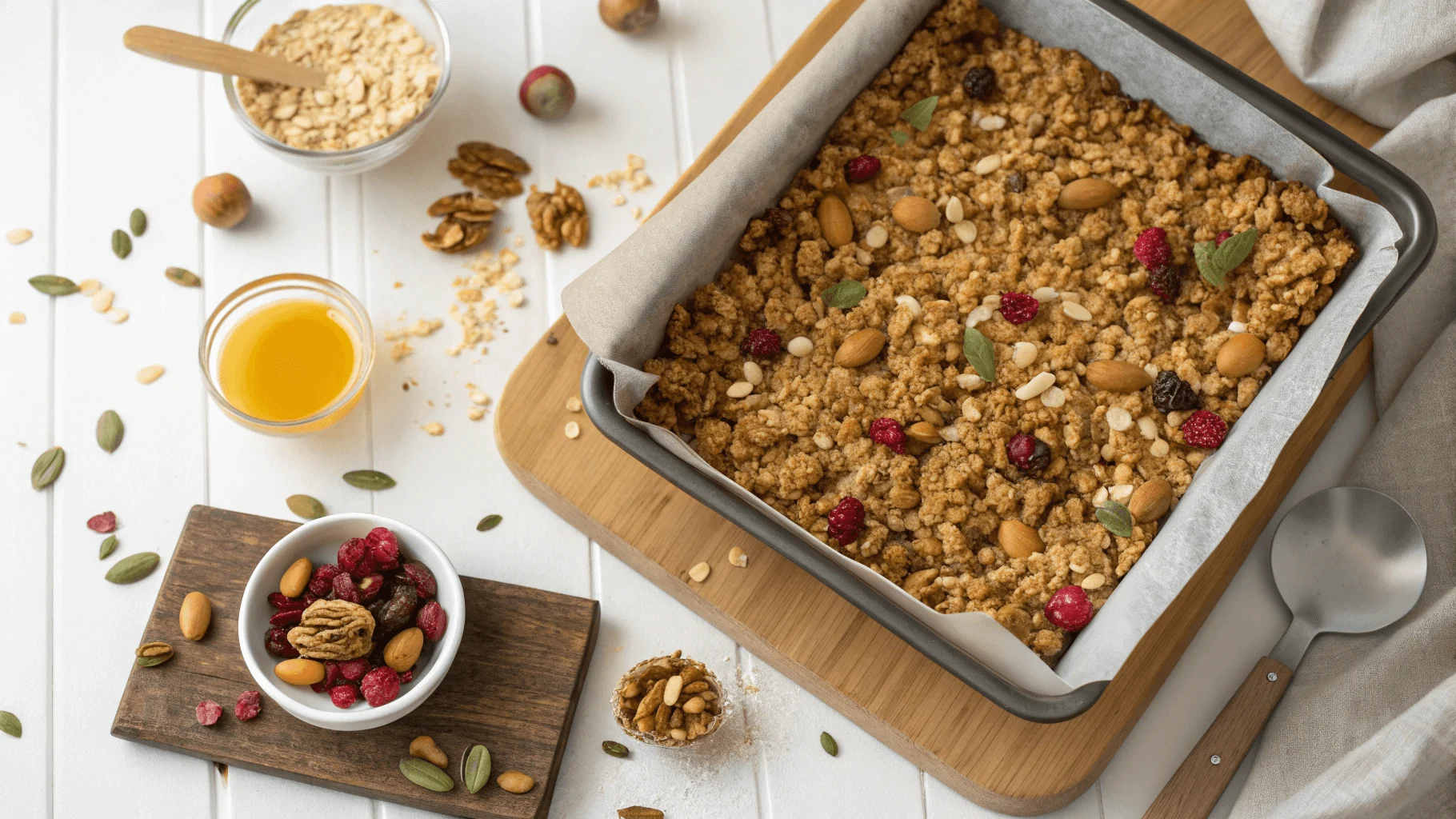Chocolate is a beloved treat enjoyed worldwide, but when it comes to storing it in a hot and humid climate like Dubai, questions often arise. Does Dubai chocolate need to be refrigerated? With its soaring temperatures and humidity, Dubai presents unique challenges for preserving chocolate. In this article, we’ll explore whether refrigeration is the best solution and discuss practical alternatives for maintaining the quality of your chocolate in Dubai’s climate. Understanding proper storage methods is essential for ensuring your chocolate stays fresh and flavorful, no matter how hot it gets outside.
Understanding Dubai’s Climate and Its Impact on Chocolate Storage
Dubai’s desert climate is characterized by high temperatures and humidity levels, especially in the summer months. With temperatures regularly exceeding 40°C (104°F), the heat can cause chocolate to melt, losing its texture, shine, and taste. For those curious about the unique flavors of Dubai chocolate bars, it’s evident that proper storage techniques are critical to preserving their quality.
Key Factors Affecting Chocolate Storage in Dubai:
- High temperatures: Chocolate begins to soften at around 25°C (77°F) and melts at approximately 30°C (86°F). This makes it essential to store chocolate in a cool environment to avoid premature melting.
- Humidity: Dubai’s humidity can cause chocolate to “sweat,” creating a sticky texture and ruining its appearance.
Given these environmental factors, understanding how to store refrigerated chocolate properly in Dubai is critical.
Types of Chocolate and Their Specific Storage Requirements
Different types of chocolate, including Dubai chocolate, have varying storage needs. While all chocolate benefits from being stored in cool, dry places, specific types require particular care to maintain their texture, flavor, and appearance, especially when refrigerated.
- Dark Chocolate: Dark chocolate generally has a higher cocoa content and less dairy, making it more resilient to heat. However, extreme temperatures can still affect its structure. It’s best to store it in a cool environment away from sunlight.
- Milk Chocolate: Milk chocolate contains milk powder or condensed milk, making it more prone to melting in hot conditions. Proper storage is essential to prevent the chocolate from becoming a gooey mess.
- White Chocolate: White chocolate has a higher fat content, making it more sensitive to temperature fluctuations. Storing white chocolate in a refrigerator can help prevent it from becoming overly soft or oily.
Refrigeration Considerations for Different Types of Chocolate
- Dark chocolate: Can usually handle slightly warmer temperatures but benefits from cooler conditions.
- Milk and white chocolate should ideally be refrigerated or stored in a cool place to maintain their integrity.
To get more insights into why Dubai chocolate is so special, understanding the role of cocoa content and local ingredients is essential.
Common Misconceptions About Refrigerating Chocolate
There is a lot of debate about whether Dubai chocolate needs to be refrigerated, and many misconceptions exist regarding chocolate refrigeration. Some people believe refrigerating chocolate is always necessary, while others think it’s best to keep chocolate at room temperature regardless of the climate. Let’s examine some common myths:
- Myth: Refrigerating chocolate always preserves it
Refrigeration can cause condensation to form on the chocolate, leading to a dull, unappealing surface and altering its texture. When chocolate is exposed to moisture, it may also develop a white, powdery coating called “bloom,” which affects its appearance and texture, though not necessarily its taste. - Myth: Chocolate doesn’t melt in high heat
It’s a common misconception that chocolate will always remain solid, even in hot conditions. However, chocolate melts at relatively low temperatures, making it prone to damage if stored improperly in a hot environment.
Practical Alternatives to Refrigerating Chocolate in Dubai
While refrigeration is one option for storing Dubai chocolate, it’s not always the best solution due to the potential risks associated with condensation when refrigerated. Here are some practical alternatives for chocolate storage in Dubai’s hot climate:
- Cool, Dry Storage: The most effective alternative is storing chocolate in a cool, dry place, such as a pantry or cupboard, away from direct sunlight and heat sources.
- Chocolate Storage Boxes: Use airtight containers or storage boxes designed to maintain a stable environment for chocolate. These containers help protect the chocolate from moisture and temperature fluctuations.
- Temperature-controlled storage: If you’re storing large quantities of chocolate or premium chocolates, investing in a temperature-controlled storage unit or a wine cooler can be an ideal solution.
Benefits of These Alternatives:
- Prevents moisture damage that can occur with refrigeration.
- Helps maintain the chocolate’s original texture and flavor.
- Easy to implement without needing specialized equipment.
The best practices for storing Dubai chocolate emphasize the importance of avoiding humidity and extreme temperatures. For example, learning about why Dubai chocolate is so expensive can also highlight the craftsmanship and care required to protect these delicate treats.
The Effects of Refrigerating Chocolate: Pros and Cons
When asking, “Does Dubai chocolate need to be refrigerated?” it’s important to consider the effects of refrigeration on the chocolate itself. While refrigeration can protect chocolate from melting, it also comes with potential downsides.
Pros of Refrigerating Chocolate:
- Prevents melting: In Dubai’s hot climate, refrigeration can prevent chocolate from melting into a sticky mess.
- Preserves freshness: Refrigeration can help extend the shelf life of chocolate by slowing down the oxidation process.
Cons of Refrigerating Chocolate:
- Condensation: One of the biggest downsides to refrigeration is the risk of condensation. When chocolate is removed from the fridge, it can absorb moisture from the air, leading to bloom and a less desirable texture.
- Flavor alteration: Storing chocolate in a fridge can sometimes dull its flavor, as it may pick up odors from other food items in the fridge.
- Texture changes: Refrigeration can alter the smooth texture of chocolate, making it feel chalky or gritty upon consumption.
Chocolatiers’ Recommendations for Storing Chocolate in Dubai
Chocolatiers and chocolate experts often recommend various storage methods to keep Dubai chocolate fresh and in good condition, especially when considering whether it needs to be refrigerated in hot climates like Dubai.
- Avoid refrigeration unless necessary: Most chocolatiers suggest storing chocolate at a consistent, cool room temperature, ideally between 18°C and 22°C (64°F to 72°F). Only refrigerate chocolate if the ambient temperature is too hot for it to remain solid.
- Use a storage container: Keep your chocolate in an airtight container to protect it from moisture and odors.
- Store chocolate away from light: UV light can degrade the quality of chocolate, so it’s best to keep it in a dark location.
Expert Tips:
- If chocolate has been refrigerated, it’s important to let it return to room temperature before consuming it to avoid undesirable textures and condensation.
- Invest in quality storage options that help maintain a consistent temperature and protect the chocolate from the elements.
How to Revive Chocolate After Refrigeration
If you’ve accidentally refrigerated your chocolate and it has developed a bloom or a change in texture, don’t worry—there are ways to restore it.
- Allow the chocolate to return to room temperature. Take the chocolate out of the fridge and let it sit at room temperature for at least 30 minutes. This helps prevent condensation from forming on the surface.
- Gently melt and re-temper the chocolate: If the texture has been affected, gently melting the chocolate and re-tempering it can help restore its smooth, glossy finish.
- Use it in baking or cooking: If the chocolate is too damaged for direct consumption, consider using it in baking recipes, hot cocoa, or desserts.
Why Chocolate Storage Differs Between Countries
Chocolate storage recommendations differ from country to country because of varying climate conditions. In cooler climates, chocolate can often be stored at room temperature without issue. However, in hot, humid locations like Dubai, the rules change.
Key Differences:
- Temperature and humidity: Different climates require different storage techniques to protect chocolate from temperature fluctuations and moisture. In hot, humid regions like Dubai, specialized storage solutions are often necessary.
- Cultural preferences: In countries with cooler temperatures, chocolate is often consumed without refrigeration, while in hotter climates, refrigeration or other cooling methods are commonly used.
Understanding how climate affects chocolate storage is essential for enjoying your favorite treat no matter where you live.
The Science Behind Chocolate Preservation
When it comes to preserving chocolate, temperature is one of the most important factors. Chocolate is sensitive to both heat and cold, which can impact its texture, flavor, and overall quality. In general, chocolate should be stored in a cool, dry place away from direct sunlight. However, Dubai’s warm climate often poses a challenge for chocolate lovers.
- The cocoa butter in chocolate is highly sensitive to temperature fluctuations.
- Exposure to heat can cause the fat in chocolate to separate, leading to a phenomenon known as “bloom,” which results in a white, powdery coating on the surface.
- On the other hand, refrigeration can cause chocolate to become too hard, altering its texture and flavor.
Therefore, it’s essential to understand how best to preserve chocolate in a climate like Dubai’s.
How Packaging Plays a Role in Chocolate Longevity
Proper packaging is crucial for extending the shelf life of chocolate, especially in places with high temperatures like Dubai. The packaging protects the chocolate from external factors such as air, moisture, and light, which can degrade its quality. Well-designed packaging also helps maintain the ideal temperature for chocolate storage.
- Sealed packaging prevents moisture from entering the chocolate, which can lead to the formation of sugar bloom.
- Opaque packaging blocks light, protecting the chocolate from UV rays that could alter its flavor.
- Insulated packaging helps maintain a stable internal temperature, which is particularly important in areas with fluctuating climates like Dubai.
With the right packaging, chocolate can stay fresh and flavorful for a longer period, even in warmer conditions.
Adapting Chocolate Storage Techniques for Dubai’s Unique Conditions
Given Dubai’s high temperatures and humidity levels, adapting chocolate storage techniques is essential to prevent it from deteriorating. The key question remains, does Dubai chocolate need to be refrigerated? While refrigeration isn’t always necessary, it can be beneficial under certain conditions.
Best Storage Practices for Chocolate in Dubai:
- Cool, Dry Location: Store chocolate in a cool, dry place away from direct sunlight. Ideal temperatures range from 15°C to 18°C (59°F to 64°F).
- Avoid Humid Areas: Humidity can cause chocolate to absorb moisture, leading to the growth of mold or the development of sugar bloom.
- Refrigeration: If the temperature exceeds 30°C (86°F), refrigeration may be necessary, but only under specific circumstances. Place the chocolate in an airtight container to prevent moisture absorption.
By following these guidelines, you can preserve chocolate without the need for refrigeration, except in extreme conditions.
Comparing Refrigeration vs. Air Conditioning for Chocolate Storage
One common dilemma faced by Dubai residents is whether to store chocolate in the refrigerator or rely on air conditioning. Both methods can be effective, but each has its pros and cons.
Refrigeration:
- Advantages: Refrigerators maintain a consistent, low temperature, preventing chocolate from melting.
- Disadvantages: Cold temperatures can cause the chocolate to lose its smooth texture, becoming harder and less flavorful. Additionally, when you remove the chocolate from refrigeration, condensation may form, causing a loss of crispness.
Air Conditioning:
- Advantages: Air conditioning provides a stable and moderate temperature, often more suitable for chocolate than refrigeration. It helps prevent rapid temperature changes when you take chocolate in and out of a fridge.
- Disadvantages: Air conditioning may not be as effective during extremely hot weather or in places with high humidity. Without additional protection, chocolate might still suffer from sugar bloom or texture issues.
Ultimately, air conditioning often provides the better option for storing chocolate in Dubai, especially when set to a stable, cool temperature.
Impact of Light Exposure on Chocolate in Hot Climates
Exposure to light, particularly sunlight, can cause significant damage to chocolate, especially in hot climates like Dubai. Light exposure can cause a breakdown in the chocolate’s chemical structure, which may alter its flavor and texture over time.
- UV light can accelerate the oxidation of cocoa butter, leading to off-flavors.
- Artificial light can also have a similar effect, gradually diminishing the quality of chocolate.
To minimize the impact of light, it’s crucial to store chocolate in opaque or dark-colored packaging. Keep the chocolate in a place that shields it from direct light sources, such as in a cupboard or a drawer.
Seasonal Adjustments for Chocolate Storage in Dubai
In Dubai, the weather can fluctuate drastically throughout the year. While temperatures can soar to over 40°C (104°F) during the summer months, the cooler winter months may offer more favorable conditions for chocolate storage. It’s important to adjust chocolate storage techniques based on the season to ensure optimal preservation.
Summer Storage Tips:
- Refrigerate when necessary: During peak summer, refrigeration may be necessary to prevent chocolate from melting.
- Use airtight containers: This prevents chocolate from absorbing moisture, which could lead to sugar bloom or other quality issues.
- Store chocolate in cool, dry places: Avoid placing it in areas directly exposed to the sun, such as near windows.
Winter Storage Tips:
- Room temperature is fine: During the cooler months, storing chocolate at room temperature (around 18°C) is generally safe.
- Avoid humidity: Even in cooler months, store chocolate in an environment with low humidity to prevent moisture absorption.
Adapting storage techniques seasonally is an effective way to maintain chocolate quality year-round.
FAQs About Chocolate Storage in Dubai
1. Does Dubai chocolate require refrigeration?
While refrigeration isn’t always necessary, it can be helpful during extreme heat. However, it’s best to store chocolate in a cool, dry place to avoid condensation and changes in texture.
2. How can I prevent chocolate from melting in Dubai’s heat?
Store chocolate in a cool, air-conditioned environment or use insulation packaging to maintain a consistent temperature. If temperatures are very high, refrigeration may be necessary.
3. Can chocolate bloom in Dubai’s climate?
Yes, chocolate can develop sugar bloom if exposed to humidity or fluctuating temperatures. Store chocolate in airtight, moisture-proof packaging to prevent this.
4. How long can chocolate last in Dubai?
The shelf life of chocolate varies based on its storage conditions. If stored properly in a cool, dry place, chocolate can last several months without issues.
5. Is air conditioning sufficient for storing chocolate in Dubai?
Air conditioning is generally sufficient for storing chocolate in Dubai, as it helps maintain a consistent temperature and prevents the chocolate from melting.
Conclusion
In Dubai’s hot and humid climate, proper chocolate storage is essential for maintaining its quality. The need to refrigerate Dubai chocolate depends on the temperature and humidity levels, but with the right techniques, you can store chocolate effectively without refrigeration. Understanding the role of packaging, temperature, and light exposure can help preserve the chocolate’s flavor, texture, and appearance. By following the guidelines outlined above, chocolate enthusiasts in Dubai can enjoy their treats in perfect condition, even in the harshest of climates.
For those looking for the best practices to store Dubai chocolate, keeping it in an airtight, cool, and dry place is often the best solution. In extreme heat, you may need to refrigerate Dubai chocolate, but you should do so carefully to avoid damaging the chocolate when refrigerated.






1 thought on “Does Dubai Chocolate Need to Be Refrigerated?”